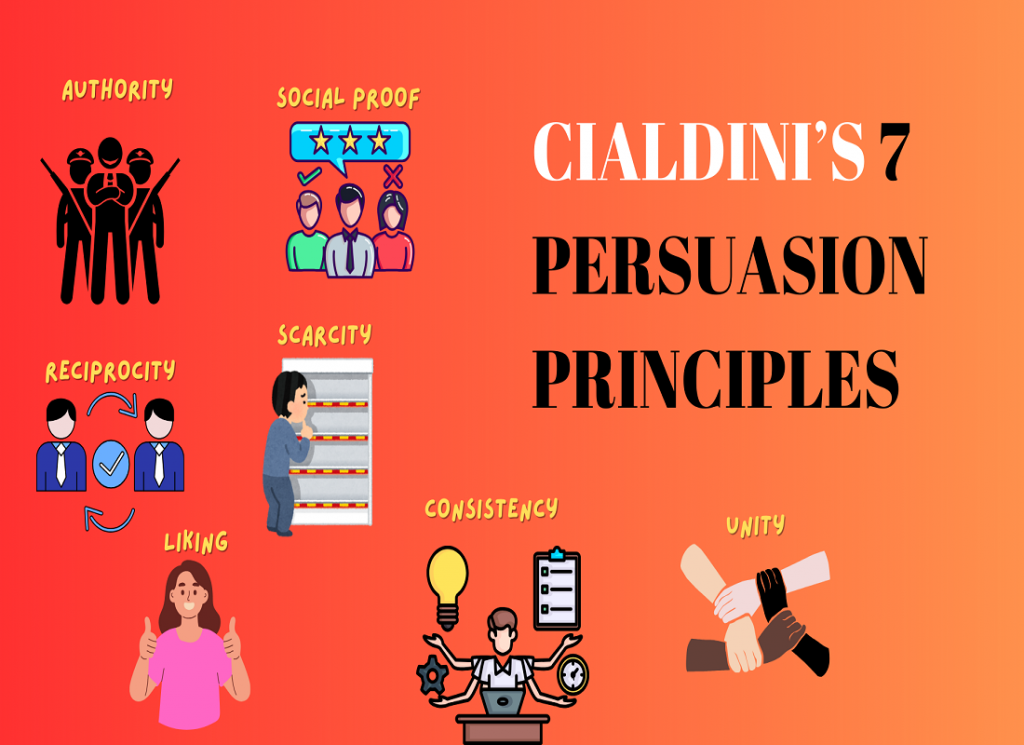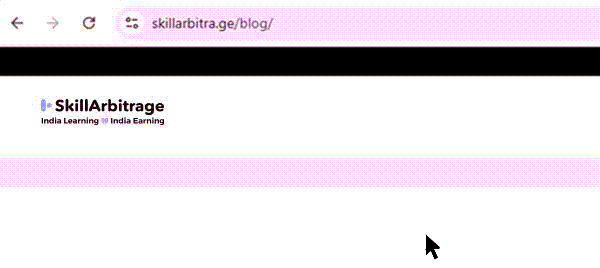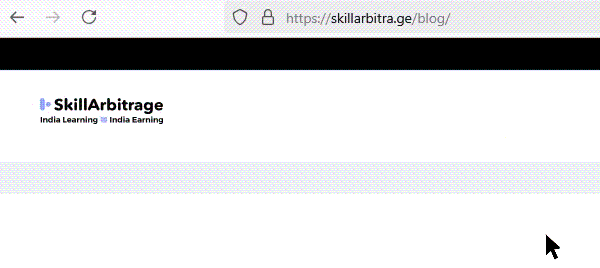This article helps the beginner Indian freelance copywriter hit the ground running in the American lifestyle copywriting market by using Robert Cialdini’s seven research-backed principles of persuasive sales writing from his seminal book “Influence: The Psychology of Persuasion.”
Table of Contents
Introduction
A welcome gift
Before anything else, a gift for you, dear reader. Here’s your free, comprehensive, handy resource for insights into the lucrative US lifestyle copywriting market, the writing techniques you will need, and strategies to get the highest-paying gigs in the lifestyle market. Bookmark it and refer to it at your leisure.
A request
Now that that’s out of the way, I’ve got some tasty treats in store for you. But before I launch into today’s lesson, I want you to promise me one action. After reading this guide, I want you to write something using these principles I’m talking about, even if small and unpaid. Don’t worry if you don’t have a client yet.
You can just write an invitation to your cousin’s wedding or a pamphlet for a small local restaurant. Just execute these techniques immediately after reading. You see, writing is muscle memory. Through application, knowledge becomes skill. You’ll need that when you have to prove yourself in the US lifestyle copywriting market.
Who am I?
Here’s a bit of information about me, your humble writer and guide through Cialdini’s persuasion principles.
What do I do? I’m a copywriter first and foremost.
My experience? Ten years of copywriting, SEO writing, and social media writing experience.
What have I written for? I wrote for the lifestyle, tech, finance, and education industries, with a bit of crypto writing here and there, and now I write for you.
Which brands? I’ve worked with brands like Genpact, Exide, Sony, and a lot of startups, and my new startup is you.
Which countries? I have written for businesses in India, the US, and some other countries, such as Singapore and the UK, but I’m now focusing on India because it’s time we dominated the lifestyle market.
What have I learned? In these 10 years, I have made a lot of mistakes. I’ve learned a lot from these mistakes. The most important thing that I learned is to write in a way that evokes emotions, tells a story of transformation, and, most importantly, drives sales.
What will I talk about in this article? Today, I’ll give you 7 of the most effective principles of persuasive writing I wish I knew when I was starting out.
Why should you listen to me?
Here’s me getting the green light for a tech lifestyle copywriting project from a French notetaking app founder.
I made $2500 on this 1-week project.
Here’s an Indian casino lifestyle client being happy with my work. I made ₹60,000 from this in 1 week.
Who this guide is for
I strongly believe you can make this kind of money from home working with US brands in the lifestyle industry easily if you read this guide and implement it immediately.
If you’re still reading, it means you have the drive and resourcefulness to adapt and learn. With those qualities, success is inevitable. I wrote this guide for someone with those exact qualities. All you need are the specific techniques that I’m about to share.
Some bad news
A word of warning before we move on. The cat’s out of the bag. The talent arbitrage opportunity between the nations of the Indian subcontinent and Western countries is out in the open. Indian writers are waking up to the opportunities in the US lifestyle industry and thronging to it.
Why is that a problem? Indian writers are not the only ones you have to worry about. Writers from Pakistan, Bangladesh, and Sri Lanka have also sounded war bugles.
There are implications. You know what that means, don’t you? The gold rush is on. And the clock is ticking.
“What does that mean?” you might be thinking. It means that the money is waiting. For whoever gets there first. In this game of “Fastest Finger First,” there’s no tomorrow.
“What do I have to do?” Now you’re talking. This is what you have to do. If you want to get that pot of gold, take action today!
Some good news
Your home country is the first good news. We belong to the most populous South Asian country.
Your language proficiency is the second good news. If you’re reading this, you’re proficient in English.
Demand is the third good news. American lifestyle brands are expanding into South Asia every day. And they need South Asian writers who are skilled in English.
Guess where most of those writers will come from? The most highly populated South Asian country, India. Not to get too patriotic, but HELL YEAH, INDIA!
So, you’re already in the lead. Now, all you have to do is accelerate before anyone else catches up and reads this guide. How will you do that? By turning this knowledge into skill. How do you do that? By using it in writing immediately after reading.
Ok, ok, I know you’ve had enough of the lecture. Fine, let’s explore Cialdini’s principles.
Cialdini’s persuasion principles – The big seven
Ever wonder how the best salesmen, copywriters, and politicians influence people? Dr. Robert Cialdini had the same question. He’s a bestselling author and an American psychologist who specializes in the psychology of persuasion. He spent years undercover. No, not as a spy but as a salesman. He worked everywhere – and I mean everywhere – at car dealerships, fundraising organizations, and telemarketing firms for his research. He trained himself in real-world sales situations. He noticed that all selling happens based on these seven principles of influence – reciprocity, commitment and consistency, social proof, authority, liking, scarcity, and unity. We’ll see how they apply to lifestyle copywriting. We’ll also use these principles to get you freelance work from American brands. And there are some surprises for you in the upcoming sections – a fun little game of “spot the technique.”
Let’s begin our journey through customer psychology.
Reciprocity
What it means
Reciprocity means exchange or giving back. This principle talks about the human instinct to give something in return when we receive something. Remember when you invited your classmates to your birthday party and they gave you gifts? You gave them a return gift. That’s reciprocity.
How it’s used
This principle can be used endlessly.
- Providing a free ebook with a complete solution to a narrow problem and then asking for email addresses to expand an email list is the most common example. In the copy biz, it’s called a lead magnet.
- Giving away templates for knowledge work is an underrated hack. There are many areas of knowledge work, like note-taking, project management, and legal work, that are complex and where people are looking for simplification.
- You can provide a free mini-course. It’s a winning strategy on coaching platforms like Skool.
- Personal brands, aka people who are making their names in a niche, can provide free value through webinars and then upsell on the same call.
- SEO writers, CRO specialists, and visual designers often offer free website audits, copy audits, SEO audits, and graphic audits before upselling a solution. This also has the benefit of making the problem areas visible to your potential client.
Swiggy and Zomato, Ola and Uber – these duopolies are a treasure trove of free giveaways. As a food and travel enthusiast and a marketing enthusiast, I’ve gotten a lot from these companies. They gave away abundant free or heavily discounted food and rides during their early years. Even now, they have new offers, discounts, and giveaways going on every day.
You can also use reciprocity through free giveaways.
What can you give for free? Provide free guides, exclusive content, free samples, and discount codes – anything that could capture the interest of your prospects. Later, upsell to the people who have shown interest in the free stuff.
What if you don’t have anything to give for free? Get creative. Reframe existing content as gifts. Don’t understand how? Here’s an example in the next section.
Example of reciprocity in this article
Here’s something fun for you. I opened this article with a bid for reciprocity. Scroll up and read the first line again. It says, “Before anything else, a gift for you, dear reader.” Haha, got you, didn’t I? But seriously, bookmark that article. It really is chock-full of information you’ll need.
Using reciprocity to acquire clients
In my freelance journey, I sourced clients on social media. Primarily, Twitter (now called X) was my lead generation source. I’d simply comment on Silicon Valley founders’ tweets and give them free help without any expectations.
It helped me build friendly relationships that later on became work relationships or got me referrals from them. In 2020, I helped a business owner improve his press release because I liked the business model. You can see for yourself here how casual it was. I wasn’t even paying attention to the spelling and grammar.
Little did I know that in 2021, this one little assist would snowball into the biggest retainer of my life until then at $5,000 per month. A few months later, he announced that he was looking for writers, and I sent him this DM.
Aaaaand that’s how I landed a $5,000 per month deal.
A word of warning. This strategy will not always work. It requires patience. Provide real value. Don’t expect immediate returns. This is about actually wanting to serve, not a transactional quickie deal.
Now that you know how to use reciprocity in your copy and for client acquisition, let’s move on to our next principle of persuasion – commitment and consistency.
Commitment & consistency
What it means
This is a core human psychological insight that essentially says that people don’t like change. They tend to act according to their past patterns. So, if they make a small commitment early on in an interaction, they’re likely to continue to act consistently in that direction.
Conduct this experiment the next time you invite a friend home. Ask them politely to take off their shoes at the door. Assuming they have done that, ask them later to put a TV remote in its place or put a plate in the sink. They are much more likely to comply because they agreed to take off their shoes earlier. Try this on a chaotic friend. I mean, what are friends for if not psychological experiments? I’m kidding!
How it’s used
You can get your foot in the door with reciprocity and then keep making inroads with commitment and consistency. As a brand, you ask customers for a low-risk, low-bandwidth action, which opens the door for a bigger ask. For example:
- A fitness lifestyle brand might ask you to take a quick protein inventory quiz. It delivers value by making customers realize their protein deficiencies and also getting the customer to enter the brand ecosystem. Once they have taken the quiz, they’re much more likely to consider buying their protein powder, meal plan, or workout guide.
- An NGO might ask you to donate the cost of a cup of coffee for underprivileged children. This gets them a small donation and your commitment to hear from them. Later, they can ask for bigger amounts, as you have already shown commitment to helping children.
- Some fitness apps might request that you post a social media update about beginning your fitness journey. They will even give you the post copy to share on your socials. It makes you publicly responsible for chasing your fitness goals. What does that achieve? You’re more likely to stick around until you achieve your goals that way.
You can use this principle by asking for something small and reasonable. This makes your later calls to action even more effective as long as they are consistent with the earlier, smaller commitment.
Example of commitment & consistency in this article
Yes, it’s time for that fun game again. Scroll up and look under the heading “A request.” What’s happening there? I asked you to make a small commitment to use the insights of this article by writing something. You’re still here, aren’t you? C’mon, I was telling the truth. It doesn’t work if I’m lying. You know that writing through these principles will make you skilled at persuasive writing.
Using commitment & consistency to acquire clients
When I was new to freelancing, I’d pitch big, ambitious projects to clients. A single email I’d send to prospects would be a huge magnum opus describing all the things I could do and all the ways I could make their marketing better. Then, I made a friend with a lot more experience than me, and he told me to pitch something small and simple. Earlier, I was pitching the entire content strategy and getting no responses, and after this advice, I started pitching lead magnets and got my first response within 5-10 cold DMs.
So I learned to pitch something small. I’d get a small payment and then upsell. The clients were more likely to trust me once they had made a smaller commitment.
Social proof
What it means
Social proof is the simple but powerful idea that people look to other people to decide the desirability of any course of action. How many times have you thought, “If so many people are taking it, it must be a good deal”? It’s deeply embedded in the human psyche. We’re social animals, and we make our decisions socially. Friends decide to buy movie tickets together. Women go to the same jewelry store their neighbors went to. If we see a crowd somewhere, we want to explore what’s going on.
How it’s used
- Customer testimonials on the website, customer review videos on Facebook ads, star ratings on the Uber app, Play Store ratings, Amazon reviews, and various trust ratings are all used to demonstrate how many other people have bought this product or used this service to satisfaction.
- Social media apps quite literally work on social proof. Showing you how many of your friends are online and using the app is a way of showing you the value they are getting from the app.
- A fitness brand might mention the “2500 successful weight loss journeys” it’s facilitated in its ad. It’s giving you social proof of its efficacy.
You can come up with your own creative ways to display social proof. You can use visuals. You can talk about safety ratings. You can also use influencer and celebrity endorsements to bolster your claims.
Example of social proof in this article
Oh yeah, I have included social proof in this article. Of course, it’s in the introduction. Scroll up once again to the screenshot of my client telling me she’s happy with my work. That’s what it looks like. Now you know how to use it. Let’s see how social proof can get you high-paying clients from the US.
Using social proof to acquire clients
Proof beats promise when you’re pitching to new prospects. They don’t know your skills, and the quickest way of showing them your chops is by showing them what your previous clients are saying about you. You can include client testimonials, various reviews of your work, and recognizable brands you’ve worked with.
Provide excellent copy and great results whenever you work with a client. Ask every single one of them for a testimonial. With good results, they’ll be happy to help. Sometimes, you might have to work with an exceptionally well-known person or brand without pay to build your portfolio. Don’t worry, it will pay off when you show your social proof to prospective clients.
Authority
What it means
People comply readily when someone with authority tells them to take action.
You’ve seen it in your schools. Students are more likely to obey if a teacher asks them to do something as compared to one of their fellow students.
You’ve seen it in politics and the corporate sector. Uniforms, trademarks, recognizable power phrases – symbols of authority are everywhere.
You’ve seen it in institutions. Police uniforms symbolize the authority of the law, and they use it to ensure compliance from the public.
Now you’ll see them everywhere. Corporate logos, religious symbols, and political party signs are all symbols of organizational authority. They help people identify who to listen to.
In marketing, social media blue checks, quality certifications, awards, etc., play the role of symbols of authority. They let the customers know that they’re buying a quality product from a quality organization.
How it’s used
- Prominently displaying your safety and quality certifications and other symbols of authority, like ISO ratings, increases customer trust.
- A personal brand backed by valuable content you have created makes you an authority in your chosen field. Neil Patel is an online marketing authority with an insane amount of free knowledge on his website and YouTube channel. If he talks, you bet your bottom dollar I listen.
- Maths is the language of the universe. So, of course, numbers naturally have their own authority. Why do toothpaste brands tell you that nine out of ten dentists agree their toothpaste is the best? Because data helps customers feel confident in your product.
- Just like mathematics, science has its own authority, so scientific research puts customers’ minds at ease about the quality of your product. If you throw your memory back, you’ll remember that many products show “scientists” in white lab coats to symbolize science.
You can brainstorm creative ways of incorporating authority in your copy. Instead of writing “We went from one to two customers in one week,” which could be seen as slow progress, you could write “We experienced 100% growth in one week.”
Creative ways of distinguishing your client will help you stand apart from thousands of other candidates.
Example of authority in this article
You guessed it. I’ve used authority in this article. Try and spot it. Here’s a hint. It’s under “Why you should listen to me.” There, I talked about my background and my past work. Sounds obvious now, doesn’t it? Scroll up and see that I talk about how many years I have been a copywriter (time-based authority), what kind of brands I’ve worked with (brand authority), and a screenshot of me getting a positive reply from a French client (visual authority).
Liking
What it means
This is the most intuitive principle out of all seven. To put it simply, people buy from people they like. This is doubly true for lifestyle products where cost is a secondary consideration or, often, not a consideration at all. I’m sure you’ve experienced this. Let me give you a personal example. There’s a small coffee shop near my house. And wouldn’t you know it, that’s where I get my favorite iced coffee.
Ok, so what? Three baristas run the place – Ganesh, Prachi, and Abhishek.
You’re thinking, “Right, so you know their names. Big deal.” No. There’s more. Funnily enough, I already knew Ganesh from another café across town.
“So what?” When I spotted him here, I started getting my coffee exclusively from him.
Yes, yes, I’m coming to the point. The point is that I like Ganesh. If he suggests any products in addition to the coffee, I’m more likely to buy them. If he’s got any sales targets from his outlet, I’d order an extra coffee or two during the day just so he can get closer to his target.
Using the liking principle in your copy means being your audience’s Ganesh. How can you do it? Let me tell you.
How it’s used
When you read an ad or an article online, notice the things that you like about it. Things that make you feel like you’d like to be friends with the writer and incorporate them into your copy.
- We like people we relate to. Comedians use relatable stories for this purpose.
- Familiarity is another method of making your copy likable. Research is your road to making yourself familiar with the customer’s pain points and putting yourself in their shoes.
- Humor helps you get in the good books of your audience quickly. Incorporating inoffensive humor in your copy breaks the ice. If you’re not sure what kind of jokes you should incorporate, self-deprecating humor is a safe bet. It makes you sound down-to-earth and relatable.
- A conversational tone in your copy makes the reader feel like they’re talking to a friend. And people would rather buy from a friend than a stranger. A lot of content out there is written in a boring lecture-like tone. You can pitch clients to remedy this.
- Flattery will get you everywhere if you use it well. Giving people compliments makes you likable in meetings and in marketing copy alike.
Examples of liking in this article
How could I not use it in the article about Cialdini? Scroll up and see. I have used self-deprecation (“your humble writer”) and given compliments (“you have the drive and the resourcefulness to adapt”). There are more examples. I will leave them as an exercise for you.
Using likability to acquire clients
Since you’re targeting American clients and they must be talking to American audiences, you need to practice writing the American idiom. American slang is one of the things that will make you attractive as a work partner to American clients because local slang gives the feeling of familiarity.
Just as one of the many Indianisms, Indian writers habitually say, “Surely, I will do that for you.” Americans might find that confusing because of the formality. Saying “Sure, I’ll do that for you” sounds much more local, professional, and therefore likable. Notice the use of contractions (“I’ll” instead of “I will”). Study these turns of phrase to put the American audience at ease, and you will enjoy effortless success in the American market.
People often ask me, “How am I supposed to sound American? I’m an Indian, after all.” I tell them it’s a simple matter of double-checking. Nowadays, we have access to AI tools that can check how understandable your copy will be to the average customer in your market.
When you practice writing for an American audience, you’ll learn to be mindful of using American cultural references. It helps you not only stand out from the competition but also be liked by clients and readers.
Don’t say, “The results are as thrilling as a Bollywood blockbuster,” because Americans wouldn’t know what you’re talking about. Say, “The results are more eye-catching than the Superbowl halftime show.” This gets your audience feeling like a familiar person is talking to them.
Conversational-sounding copy uses a lot of idiomatic expressions. These expressions are highly local. For example, an American wouldn’t say “kilometers apart” to emphasize difference. They’d say “miles apart” instead.
If you weave highly specific American imagery into your words, you’ll be likable not only to American readers but also to American lifestyle brands like “BBQ on the Fourth of July”.
Scarcity
What it means
There’s a world of difference between “buy” and “buy now.” This gap can be bridged by the principle of scarcity. Scarcity is the psychological insight that says that people value things that are rare and exclusive. Not only that, they act on this value judgment with urgency. So, scarcity is used to drive purchasing behavior by introducing a sense of urgency.
How it’s used
FOMO – the fear of missing out – is a fundamental human psychological trait. FOMO-based copywriting techniques use scarcity and drive urgent purchasing actions.
- Study e-commerce ad copy to get the best examples of FOMO-driven offers. Amazon’s Great Indian Festival sale and Flipkart’s Big Billion Day sale are great examples.
- Limited goods offers use scarcity of materials to drive sales by limiting the number of products on offer. Whenever you see “only 5 seats left” in an ad, the writer is introducing scarcity.
- Exclusive access is another tactic to sell the product or the service through FOMO. VIP access passes to events, invitation-only webinars, and online accounts fall under this category of scarcity.
Once again, these are only some of the examples of using the principle of scarcity, but you can introduce urgency in your copy in many different ways if you’re creative. Sometimes, you don’t have limited items or limited time. How do you introduce FOMO then? The way I did in this article.
Examples of scarcity in this article
Yes, of course, I used it. Yes, of course, you have to scroll up again and see for yourself. See under the “Some bad news” section. “The cat’s out of the bag… sounded war bugles” – this section introduces FOMO by introducing competition between you and other writers trying to get US lifestyle copywriting work. “The clock is ticking… take action today!” section introduces FOMO through time scarcity. Hey, I’m still telling the truth. You better hurry.
Using scarcity to acquire clients
This principle is best used on social media to acquire clients. Here’s how it goes. You post engaging content regularly on social media. See which platform you’re most comfortable with. The highest ROI platforms for me have been X and LinkedIn. If you’ve got your own email list, that’s even better.
You’re thinking, “What should I post?” Simple. Post your observations and perspectives on marketing, sales, and copywriting. This will get you some eyeballs.
Then you launch your scarcity tactics. You can inform your audience about the limited availability of your services. They need to take action urgently to use them. You can let them know that you can only take 2 clients in a given month, for instance. Or you could tell them you have one day between your busy schedule and you can take 3 brands at most on one-on-one strategy calls. Or you can put out limited-time offers like “free copy audit for the next three days only.”
An important thing to remember is that scarcity works best when it’s true. People are good at recognizing made-up scarcity, and overdoing it could hurt your personal brand, so be true while being creative with it.
Unity
What it means
Unity means creating a shared identity. Have you ever noticed that when India is playing Pakistan in a cricket match, we support India, but if Afghanistan is playing England, we support Afghanistan? When we’re playing Pakistan, our “Indian” identity takes over. We’re operating at the “national” level. But when Afghanistan is playing England, our Asian identity takes over.
Suddenly, we’re operating at a “continental” level. At a smaller level, you have seen games between schools and states. We support our school against another school, but if players of another school are playing at the state level, we support them against another state. This human psychology insight is termed “unity” by Dr. Robert Cialdini.
How it’s used
Unity works through shared identity, and identity is an appeal to tribalism inherent in all human beings.
- Invoke a “tribe” or an ingroup. Many brands have literally used the word “tribe” in their campaigns to invoke tribalism.
- You can invoke tribalism indirectly by taking up advocacy for an identity. McDonald’s did it by invoking the contributions of para-sportspersons in this ad campaign called “We the Invisible.”
- Often, tribal differences are the differences between the ingroup and the outgroup. Invoke the “us vs. them” dichotomy to make the audience feel like a part of a bigger
team.
Examples of unity in this article
Once again, yes, I used unity in this article, too. Once again, yes, you will have to scroll up. See the “Some bad news” section. I mentioned competition from Pakistani, Bangladeshi, and Sri Lankan writers. This invoked the “us vs. them” in my audience, i.e., Indian freelance writers.
In the “Some good news” section, “HELL YEAH, INDIA” invokes your national identity.
Once again, yes, what I said is all true.
Using unity to acquire clients
Of course, unity through national identity is not going to work if you’re pitching to American brands. So, what kind of unity can you use? Values-based unity, outcome-based unity, and unity against competition, of course. Find out your common values and emphasize them.
Show alignment with the values of the brands you’re trying to work with. An eco-friendly, sustainable brand would prefer to work with a copywriter who values the environment.
Create an “us vs. them” picture in your pitches. Do some competitor research. Underline the things you can do that will differentiate them from the competition.
Use the language of unity. Say “we” instead of “I” or “you.” Instead of saying, “I can write emotionally resonant copy to increase your social media engagement,” say, “With my emotionally resonant copy, we can increase our social media engagement by up to 250%.”
Learn community-focused copywriting. Community building is a cornerstone of lifestyle branding, and a good community copywriter is invaluable in those efforts.
Study what traits, lifestyles, and values make up the community for the brand you’re pitching to. Mention them in your pitch.
Many brands are looking for community managers and community copywriters specifically. By becoming a pro at community copy, you could be next in line for a remote community manager or community copywriter position.
So, that was my complete guide to Robert Cialdini’s seven principles of persuasion. You can land clients with it, and you can generate excellent, high-converting copy for them with it. All of that can happen quickly and inevitably if you remember what I asked you to do earlier. Use these principles and write something with them right now. You will be surprised at how persuasive you get.
Oh, I forgot to tell you – these are practically superpowers. Please use them ethically. If you could persuade anyone, what would you do with it? Personally, I’d get busy making some cash.
FAQs
Do I need copywriting experience to benefit from this guide?
To benefit from this guide, no. But to get clients, a little bit of experience always helps. Copywriting is not just “good writing.” Even if you’re a strong writer otherwise, in copywriting, you sell products and services first. So, try and get a bit of experience working with local businesses and Indian brands to build your portfolio. This guide will help you go from a strong writer to an effective writer so you can start pitching.
Why American lifestyle brands?
Working for American brands gets you earning in dollars, which is already an upgrade in income. Lifestyle brands pay higher-than-average fees due to their premium pricing, so that’s icing on the dollar cake.
What industries use these persuasion principles?
Persuasion is a universal activity. Your parents used it when you refused to eat your veggies, and you used it to get your girlfriend/boyfriend. Similarly, all organizations, government or corporate, use it, whether small or big. Where? On all channels, from political party manifestos to online marketing, direct marketing, and corporate TV ads. Once you start noticing them, you’ll never stop.







 Allow notifications
Allow notifications
